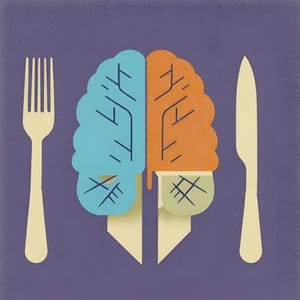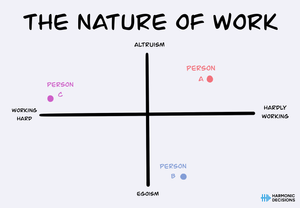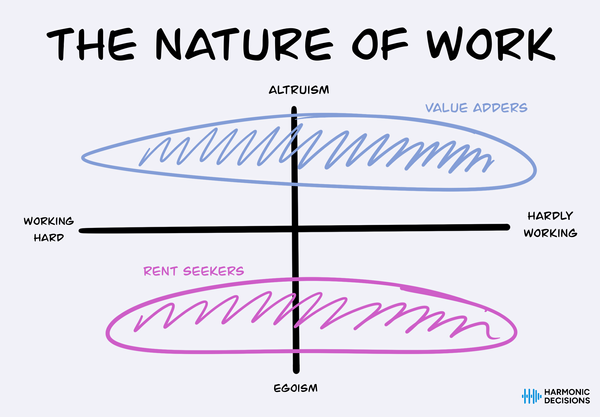There's probably no NBA team with more drama surrounding it in the past decade than the Philadelphia 76ers. It's unexpected, but my basketball fandom was foundational to my journey into decision-making strategies. I'm referring, of course, to the long and convoluted story of The Process.
In a nutshell, Sam Hinkie was hired as the General Manager in 2013 to reverse the fortunes of a team stuck in mediocrity. His strategy of gaming the system by accumulating draft picks and losing a lot was highly controversial and resulted in his forced resignation. In his resignation letter, Hinkie talked about the need for "Thinking about thinking."
So naturally, this got me thinking.
Since I read Hinkie's resignation letter (I'll link it at the bottom), I've thought about my own thought patterns. Like others, I tried to make second brains and mind palaces, using tools like Notion to bring some structure to all the thoughts bouncing around in my head. After years of introspection, I've split my own thoughts into three broad categories:
- Storing information (Reading something or, more broadly, consuming content)
- Retrieving information (Recalling something that I've consumed, to whatever level of detail possible)
- Combining information (Reflecting on the different things I've consumed and connecting the dots)
The first two are analogous to what information theory calls "Encoding" and "Decoding" and are the more "systematic" levels of the mind. The last category is the one that's more intuitive and allows for levels of creative expression.
Creative expression is a fundamental aspect of what it means to be human, and the loudest voices against the current AI technology out there are naturally upset because they see the potential for AI to replace many creative functions. Photographers, actors, and video editors are all threatened by AI's abilities.
However, generative AI is still not capable of the initial creative force that humans possess. While powerful, it can't translate our thoughts into words for us. As an example, check out what Canva's AI image generator said when I tried to make the artwork for this week's post:

This is admittedly some terrible prompt engineering on my part, but the point still stands: We can't expect someone else to do this work for us. We have to be the ones to bridge our internal thoughts to the external world, which is what a decision ultimately is!
In my last post, I wrote about the importance of original thought and the need to "find your own voice." The reflective process is key to this, and the unfortunate reality is that most of us either haven't been taught how to be reflective or haven't done it in a long time. I'll specifically talk about reflective techniques in my next post, but for this post, I want to focus on attention intelligence.
Attentional intelligence has been written about on corners of the internet for a while - here's Linda Ray talking about it in 2012. Being mindful about where our attention is at the moment is a high predictor of emotional regulation, increased productivity, and better focus. This is the goal of every mindfulness technique: being in control of where your mind wanders.
The flip side of being thoughtful about our attention is paying attention to our thoughts! This is the introspection required for thinking about thinking, and what I want to highlight by attention intelligence. After all, "to think" means "to direct one's mind toward someone or something." If what we direct our mind towards is its own workings, then we can begin to understand the parts of ourselves that influence our decision-making.
Most of the techniques that decision-making influencers write about, such as an Eisenhower Matrix, SWOT analyses, decision matrices, etc., are all external tools to channel your mind into analyzing itself. Their effectiveness is limited by our ability to introspect and understand ourselves.
For example, take the Pro/Con list. Perhaps the simplest decision-making tool, it's incredibly powerful but still subject to this fault. If I don't examine my own motivations, desires, and actions, then I'm not putting the right items in the Pro or Con list - and possibly ending up with a poor outcome because I have a poor process.
If we can effectively understand where our attention is naturally going, we'll be able to identify our motivations and desires without bias. For example, if I notice that my thoughts are highly fearful, then I can understand that my decisions are largely motivated by fear. I can then act on that by removing the fear from my decisions to make more objective ones.
Paying attention to our thoughts could be considered a sign of insecurity or overthinking. However, when done with a healthy amount of stoicism and freedom from the expectations of others, it can allow for better decision-making in a way that's more authentic to who we are as individuals.
In the next post, I'll share some strategies for finding your own voice and being more reflective that I've refined over the years. I'll also be making a big announcement about the offerings of Harmonic Decisions that I'll be opening up to beta users!
Also, in case you're interested, here's the redacted, publicly available PDF of Sam Hinkie's resignation letter:
As always, I would love to hear your thoughts. Registered readers can access the Discord community and comment on articles posted on the site. Everyone is always welcome to get in touch.










Member discussion